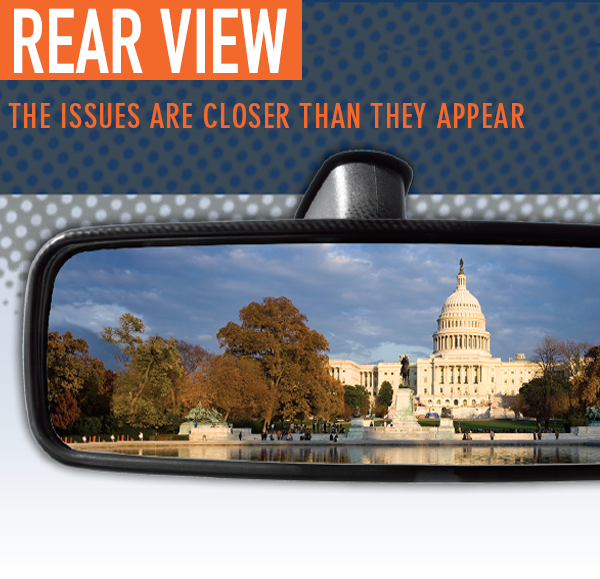Near the end of May, the Senate passed a concurrent resolution opposing the Federal Excise Tax (FET) on heavy trucks and truck bodies. Last year, the House introduced a companion resolution opposing the same tax. Although concurrent resolutions do not have the force of law, they can make a strong statement. The FET is currently at 12 percent and was first levied by Congress in 1917 to help fund the US in World War I. What is FET? Why is an increase being opposed? Let’s take a closer look.
The 12-percent Federal Excise Tax (FET) is imposed on the first retail sale of heavy-duty trucks, trailers, semitrailer chassis and bodies, and tractors: trucks with a GVWR of more than 33,000 lbs; tractors with a GVWR of more than 19,500 lbs and gross combined weight of 33,000 lbs or less when paired with a trailer or semitrailer; and trailers with a GVWR of more than 26,000 lbs. The monies received from the tax are put into the Highway Trust Fund.
CONCURRENT RESOLUTIONS
The Senate resolution (S. CON. RES. 40) and the House resolution (H. CON. RES. 33) both echo the same sentiment, stating in 2015 that the average manufacturer suggested sales price for a heavy-duty truck was more than $178,000. The 12-percent FET adds an additional $21,360 to the cost of the truck. According to the EPA and NHTSA Regulatory Impact Analysis entitled “Final Rulemaking to Establish Greenhouse Gas Emissions Standards and Fuel Efficiency Standards for Medium and Heavy-Duty Engines and Vehicles,” model year 2014-2018 EPA-Department of Transportation fuel economy rules will add up to approximately $8,000 to the price of a new heavy-duty truck. Add to the cost of a heavy-duty truck the EPA regulatory mandates and the total is approximately $30,000. Also noted in the resolutions is the average age of 9.3 years for a heavy-duty truck on the road—close to the historical all-time high. Increasing the tax would deter from the purchase of new or newer heavy-duty trucks that are more fuel efficient and cleaner for the environment. The resolutions also suggest that the latest safety technologies, such as lane departure warning systems, electronic stability control, and automatic braking for reduced stopping distance, could be slowed as a result of a tax increase. All of the variables ultimately affect the trucking industry when it comes to manufacturing and employment in the US, meaning a tax increase could further hurt economic growth.

MAKING THE ARGUMENT
The resolutions conclude that an increase to the tax would inhibit the sale of the cleanest, safest, and most fuel-efficient heavy-duty trucks and trailers due to the added cost, and with the cyclical nature of heavy-duty truck and trailer sales, there would be added uncertainty and volatility to the Highway Trust Fund. One thing is clear: Congress needs to carefully review the impacts of the FET when considering any future transportation legislation.
ABOUT THE AUTHOR:

Donna Campbell is editor in chief of Modern WorkTruck Solutions and Modern Contractor Solutions. This monthly column will feature commentary on trending issues for work truck and transportation matters.
_______________________________________________________________________
MODERN WORKTRUCK SOLUTIONS: JUNE 2016 ISSUE
Did you enjoy this article?
Subscribe to the FREE Digital Edition of Modern WorkTruck Solutions magazine.
![]()




